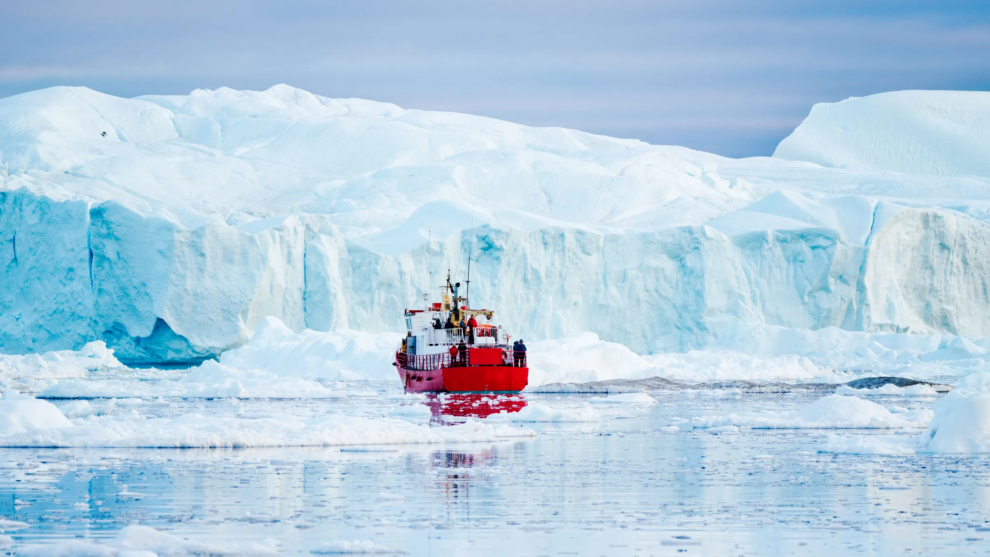One of the most pressing issues in our rapidly warming world is the extreme loss of sea ice occurring at the Earth’s poles. These fragile ecosystems, where so much depends on the presence of the floating ice, are facing an uncertain and challenging future.
In response, climate scientists are increasingly leveraging AI to help revolutionize our understanding of this critical habitat and what we can do to save it.
One of the most pressing issues crucial to developing mitigation and preservation strategies is predicting when exactly the Arctic will become ice free. For William Gregory, a research scientist at Princeton University, reducing the uncertainty in climate models to make these kinds of predictions is a step toward this.
“This study was inspired by the need to improve climate model predictions of sea ice at the polar regions, as well as increase our confidence in future sea ice projections,” said Gregory.
Arctic sea ice plays an important role in accelerating global climate change — by reflecting the Sun’s radiation back to space, polar ice contributes to a general cooling of the planet. However, climate change, fueled by our reliance on coal, oil, and gas, is increasing temperatures in the polar regions much faster than in the rest of the world — if the sea is too warm for the ice to form, more solar radiation is absorbed by the Earth’s surface, causing the climate to warm further and less ice to form.
This is why the importance of polar sea ice goes far beyond the poles. At a certain point in the not-so-distant future, the Arctic Ocean will likely become free of sea ice in summer, boosting the effects of global warming for the rest of the planet.
AI to the rescue
Errors in climate models, like missing physics and numerical approximations, create consistent biases in the atmosphere, land, sea ice, and ocean predictions. To overcome these inherent issues in sea ice models, Gregory and his colleagues chose, for the first time, to apply a type of deep learning algorithm called a convolutional neural network.
“We often need to approximate certain physical laws in order to save on [computational] time,” wrote the team in their study. “Therefore, we often use a process called data assimilation to combine our climate model predictions together with observations, to produce our ‘best guess’ of the climate system. The difference between best-guess-models and original predictions provides clues as to how wrong our original climate model is.”
In their study published in JAMES, the team say they wanted to see if they showed a computer algorithm “lots of examples of sea ice, atmosphere and ocean climate model predictions, and see if it can learn its own inherent sea ice errors”.
The idea being that once the neural network learns the features of the observed sea ice, it can correct the model by itself because it “can predict how wrong the climate model’s sea ice conditions are, without actually needing to see any sea ice observations,” explained Gregory.
To do this, they used variables simulated by the climate model, like ocean temperature, salinity, and velocity of the sea ice. Each of these variables contributes to overall picture of the Earth’s climate within the model.
“Model state variables are simply physical fields which are represented by the climate model,” explained Gregory. “For example, sea-surface temperature is a model state variable and corresponds to the temperature in the top two meters of the ocean.
“We initially selected state variables based on those which we thought a-priori are likely to have an impact on sea ice conditions within the model. We then confirmed which state variables were important by evaluating their impact on the prediction skill of the [neural network],” explained Gregory.
The key input variables in this case were determined to be sea ice concentration and surface temperature, far fewer than most climate models need to simulate the sea ice. The team then made the neural network learn decades of observed sea ice maps to correct the model prediction errors.
The difference between the initial prediction made by the model without AI and the corrected model state is called an “increment”, an added value showing how much the neural network was able to improve the model simulation.
A revolution unfolding
The use of AI in climate science is growing, but still in its infancy. Gregory says he and his team are now testing if their neural network can be generalized to other situations beyond just sea ice.
“The results show that it is possible to use deep learning models to predict the systematic [model biases] from data assimilation increments, and […] reduce sea ice bias and improve model simulations,” said Feiyu Lu, project scientist at UCAR and NOAA/GFDL, and involved in the same project that funded this study.
“Since this is a very new area of active research, there are definitely some limitations, which also makes it exciting,” Lu added. “It will be interesting and challenging to figure out how to apply such deep learning models in the full climate models for climate predictions.”
This is no doubt a new frontier in climate science. Is AI up to the challenge of helping scientists tackle the unfolding climate crisis? Time will tell.
Source: Advanced Science News










